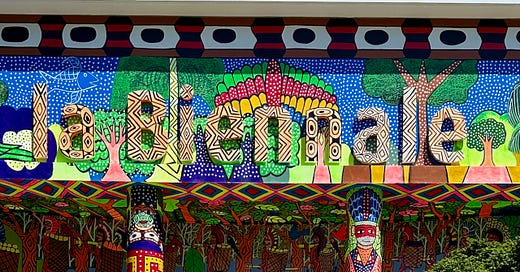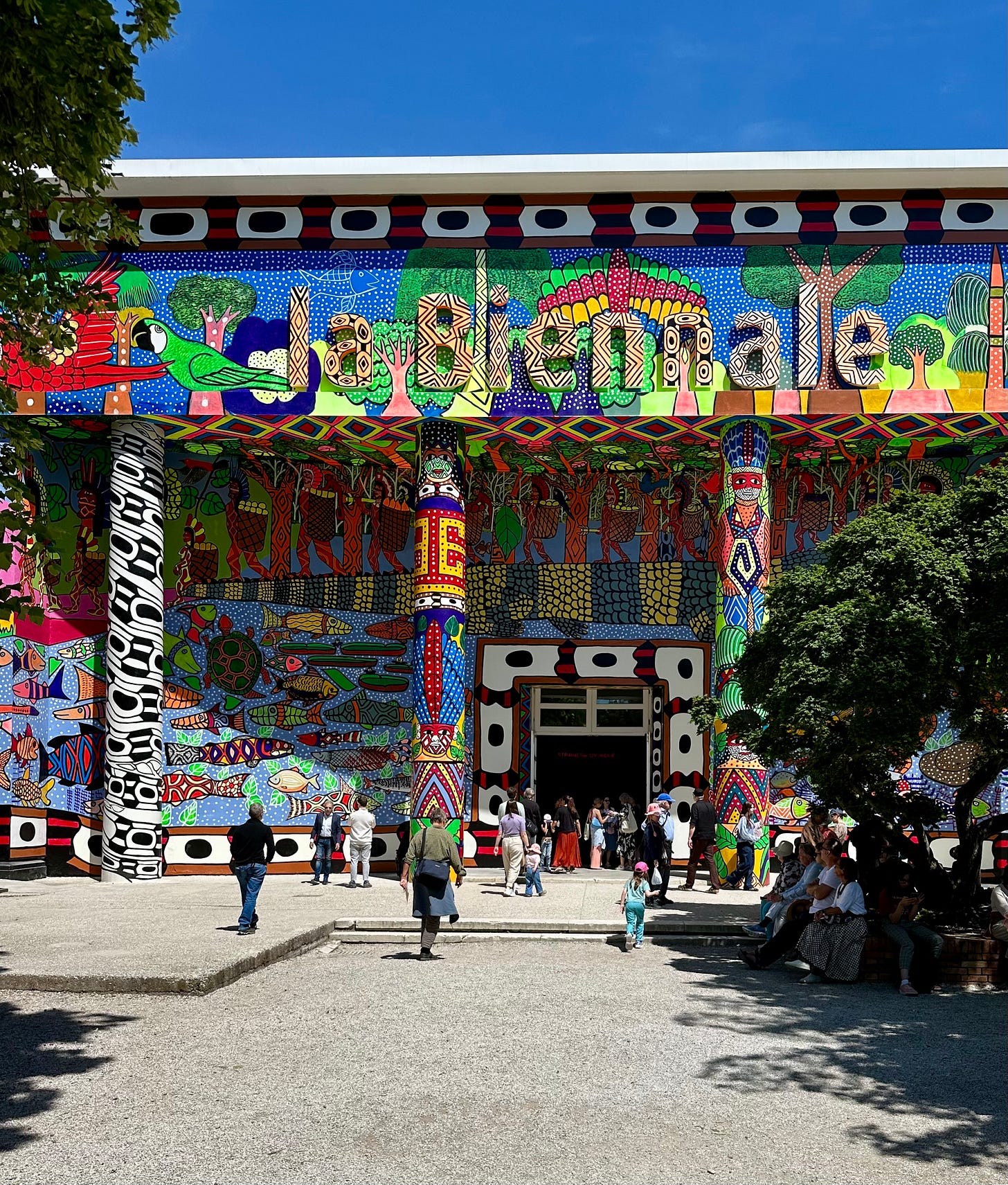In my family we call it the death march of art. Before we moved to Venice we crammed in every pavilion and collateral AND the Arsenale into three or four days. It was exhausting and exhilarating. It is such a luxury to now have it literally at my doorstep. Venetian residency (almost) in hand I bought a pass that will let me visit both the Giardini and Arsenale sites as much as I like at a much slower pace. Over the years I have learned a few things to help make the Biennale experience a little less grueling and a lot more enjoyable. Here is my Biennale survival guide.
What is the Biennale?
The briefest answer to what is the Biennale is that it is a contemporary art festival. The art Biennale1 opened in late April and runs until November 24. This years theme is Foreigners Everywhere and it is curated by the Brazilian curator Adriano Pedrosa, the first ever curator from Latin America. The general theme is focused on artists from places that have long been ignored by the art world. There are two main venues, the Arsenale and the Giardini. Most of the country specific pavilions are in these two sites. The focus in the Central pavilion in Giardini is on outsiders; “the queer artist,” “the outsider artist,” “the folk artist,” and “the Indigenous artist.” There are also shows in galleries and museums that are not officially part of the Biennale.
There is an overwhelming amount of art to see. Almost 400 artists and more than 80 countries are represented this year. You cannot see it all in a short visit. Do a little bit of research. I prefer to not see or know too much before I go. Make a list of the pavilions and collaterals that you really don’t want to miss. These Instagram accounts have good overviews.
- also has a good guide in her newsletter
This reel for Vogue.it and this one for Art News
The European Cultural Academy answers a lot of Biennale questions
And then, relax and wander and take in as much or as little as you desire.
My number one piece of Biennale advice is avoid weekends if you can. I love the last few weeks in November but know that some of the collateral shows are closed by then. Almost everything is closed on Mondays2.
The Biennale is a physical experience. There is a lot of walking and standing. Some rooms are completely dark and there are sometimes tricky steps to navigate. Wear comfortable shoes and don’t carry more than a small bag. I am loving this one.
Upgrade your subscription for my suggestions on tickets, a private map of where I eat and rest near Biennale and collateral venues and where to find the best usually off limits palazzos and spaces.





